Once all the behind-the-scenes stuff has finished being set up, you can go to the home page of your new author site and begin the process of setting up the admin area of the website. Go to the home page of your website and you should see a page like this which is the start of the setup process.
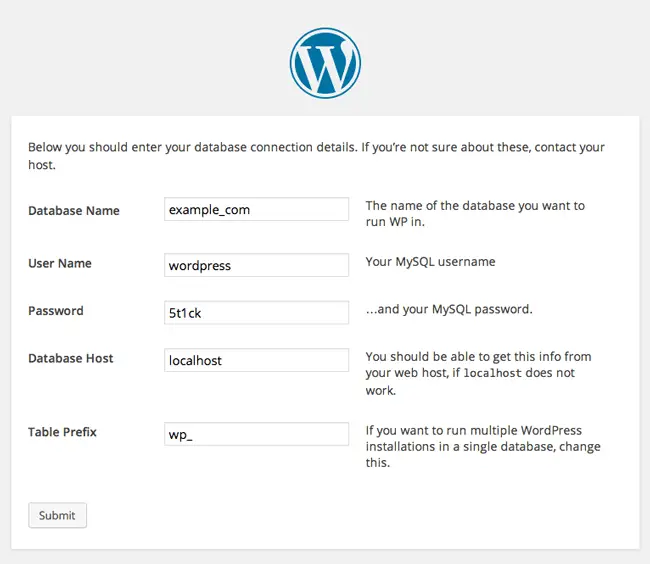
Follow the prompts to set up WordPress. You will need to have the database information you wrote down earlier for this. Once you complete the steps, you should see the default theme for WordPress as your home page (after visiting your domain).
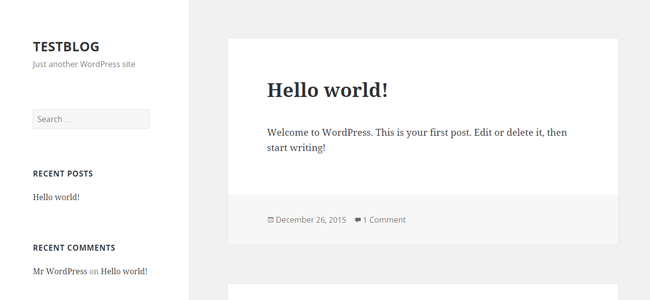
Familiarizing Yourself with WordPress
After you run the initial setup of your WordPress site and everything is good to go, you can log into your administrative area which can be found at www.yoursite.com/wp-admin. Your admin area will look like the one below.

This is the starting place for everything you do on the back end of your author website. Here you can create and manage blog posts, create and manage pages, install additional functionality, make changes and customizations to your theme and a lot more.
The Side Bar
The first thing you should familiarize yourself with is the main sidebar. This bar will remain constant no matter where you are in the administrative area of your site. It has links to all the things you would want to manage with your author website.
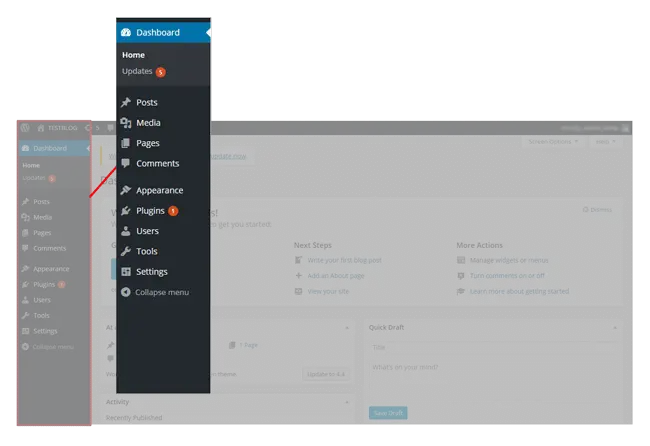
The Login Bar
The other menu bar that will remain constant across all pages is the login bar that runs across the top of every screen. This is a quick access tool bar that lets you do some of the most common tasks like creating posts or pages, logging in or out and managing comments on posts or pages.
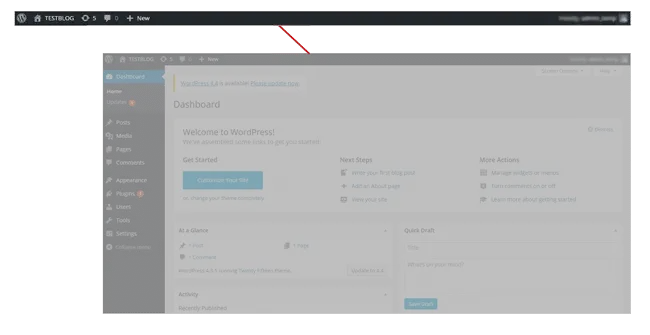
When you are logged into your website, you will see the log in bar even when you are on your public-facing website. You can quickly manage aspects of your website right from this menu whether you are in the admin area or not.
Posts
This is where you can create and manage blog posts on your author site. Depending on the theme you have set up on the site, your blog posts may appear on the home page of your site. You can also configure posts to show up on a page for only blog posts.
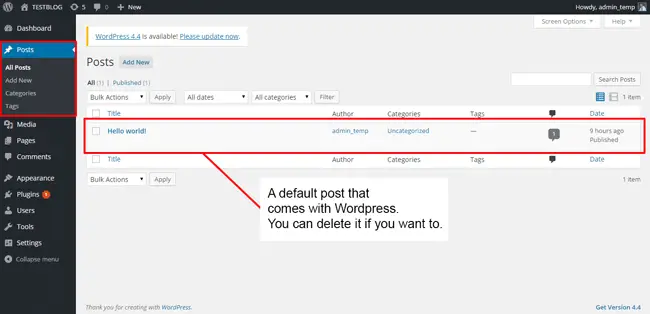
You can also manage categories and tags from within the posts menu item. Categories and tags help you organize content on your site so that it is more easily navigated by users. Site owners can also organize their content so it is more easily understood and indexed by search engines.
When you start a new post, the main parts of it will be the title and the post body. Other features that can be managed by default on the Add a New Post page are the publishing settings, the post template, the categories and tags, and whether or not visitors can comment on the post.
If you add more functionality through plugins on the site, there may be more options on the Add a New post page as well as for existing posts. For example the All in One SEO pack adds the ability to manage page titles, meta descriptions and other SEO settings for posts and pages on your WordPress site.
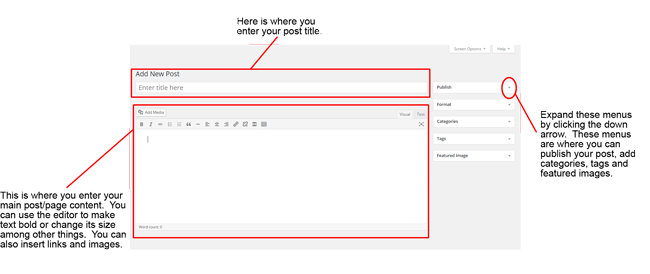
Media
The media menu item is where all of the images on your WordPress site can be added and managed. You can add images from other parts of WordPress (such as when configuring a post) but the media tab is where you can manage all the settings relate to images, PDFs, videos and other types of media on your site.

The media library shows all of the images that have been uploaded to your WordPress site. In this area you can manage your pictures, see their URL locations, search and sort them to your heart’s content. Below is an example of what your media area might look like when it’s full of images.

Pages
Next we will take a look at the pages part of your admin area. Pages contains all of the pages that make up your author website. By default you should already have a page or two created in your admin area. All pages of your site can be managed from this area. You can create new pages, delete old ones, and do other tasks either on an individual or bulk level.
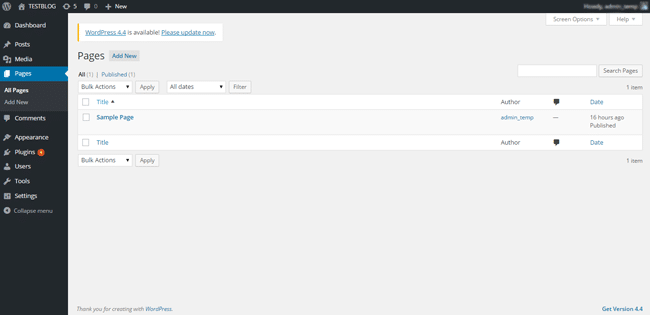
You can create a new page from the left sidebar menu or you can click the Add New button at the top of the page once you are in the manage pages screen. Once inside a new page, you can add text in the main editor, choose publishing settings for your page, add images, and choose the page template and other elements.

Note that if you add plugins (additional functionality that we will discuss later), you may see other options in pages.
Comments
By default, any page or post that you publish on your WordPress site will have comments enabled for it. That means that visitors to your site can leave comments on your content. WordPress will hold comments in moderation until you approve them. Those comments can be seen and approved from the comments menu.
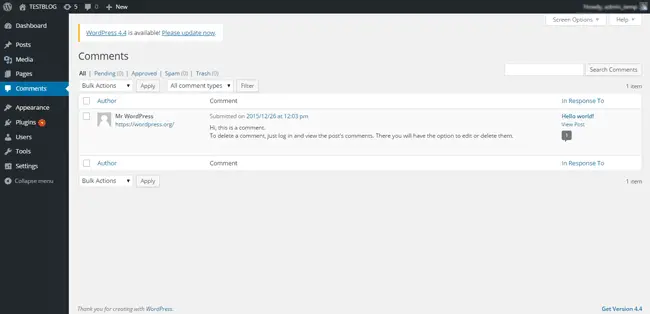
When you have a new comment, simply go to the comments area to read it. You can choose to approve, reply, edit or delete the comment. You can also mark it as spam so that the user cannot leave another comment. Note that WordPress is a notorious target for spammers so if you start seeing a lot of spam comments building up, don’t worry too much. Your visitors will not see those unless you approve them and as long as you keep up on them, you will be able to delete them relatively easily.
Appearance
The appearance section of WordPress contains many of the areas that control the foundational structure of your author website. For example your theme, your template files, widgets and theme customization settings can all be found under appearance.
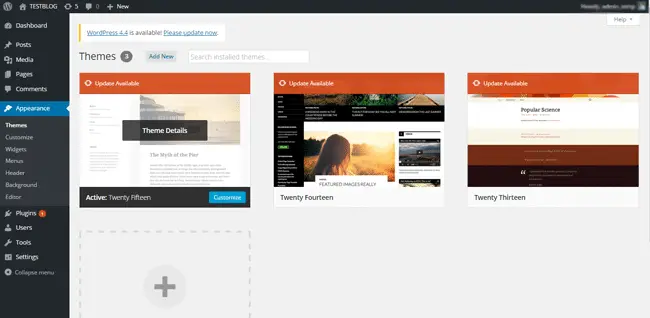
By default you will have 5-6 different sub-panels in the appearance section of WordPress. In the themes section, you can easily switch the overall look of your website with just a few clicks. Note that if you have had a lot of customizations done to your website, it is not wise to switch to other themes as your content may not get laid out correctly.
The widgets area allows you to add and manage functionality on pages. Most WordPress themes come with widget areas that are places where you can add content or other functionality.
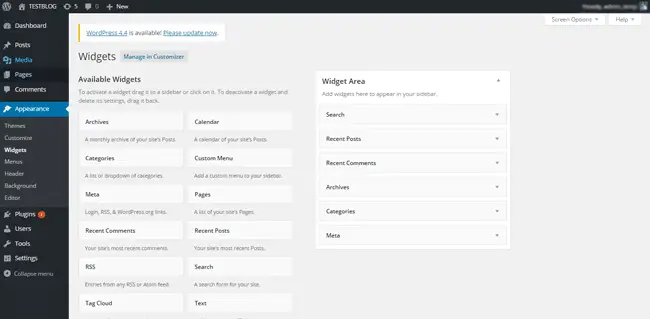
The default widget areas that come with WordPress include text areas (used for adding text or snippets of HTML), pages, categories, archives, custom menus, RSS feeds and a search bar among other things. If you download and install plugins (which we will get into more in a moment), then you may get additional functionality in the widget area. The only thing that will not change (unless you change themes) is the amount and placement of widget areas on your site. Wordpress has some excellent documentation on widgets and how they work16.
Another important section of the appearance area is menus. This is where you will manage any menus on your WordPress site. By default the themes that WordPress comes with typically have a couple menus (one main menu and one footer menu). If you make new pages in WordPress and want them to show up as menu items, you will need to add them here.


The areas where menus are positioned and how many menu areas your site has will depend on the theme you are using. You can add additional menus however you cannot add additional menu areas without changing your current theme to something else or modifying the theme itself (which would require coding knowledge).
Plugins
For WordPress, a plugin is a software program that is designed to work with WordPress as an add-on. There are thousands of plugins that have been made for WordPress that do a lot of different things. Some plugins are free and others you have to pay for. You can add plugins to make contact forms, to add security to your site, to add sliders or galleries, and pretty much anything else you want.
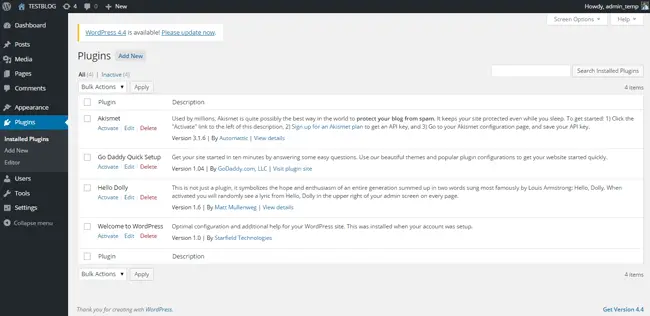
The plugins menu shows you all of the plugins that are installed on your site. WordPress comes with a couple of plugins pre-installed but you don’t have to use them. You can install pretty much as many plugins as you want to. You can search from within WordPress for plugins or out on the web. Installing new plugins is as simple as a few clicks.
Users
In the users menu, you can create and manage users for your site. This is great functionality but many authors will probably not have a need for this. Where the users feature really comes in handy is when you have multiple people working on a website and you need to set up individual logins for those users.
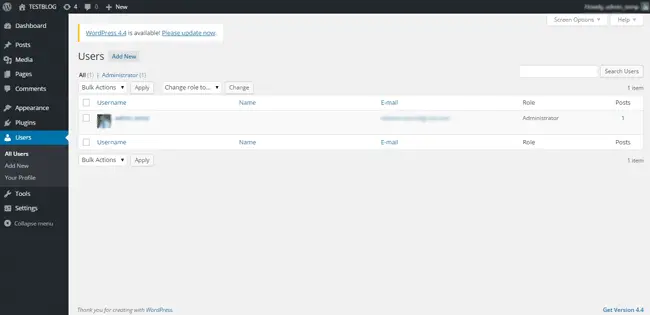
You can also use the users section to manage your own profile. From the Your Profile screen you can change the color of your admin theme, enable features, change the admin email for your account, and set up a bio and avatar among other settings.
Tools
On the tools menu you can manage available tools, import or export information from your site. The default tool that comes with WordPress is Press This. It enables you take content from the web and re-work it to be your own. The importer allows you to import posts, comments and other information from other blogging platforms. If there is an importer that you do not see in the default version of WordPress, you can install one from the plugins menu.

The exporter allows you to export data from your WordPress site. Say you want to take your blog posts, comments or other information out of your WordPress site and import it into a blogger site. You can do that from the exporter area of the site.

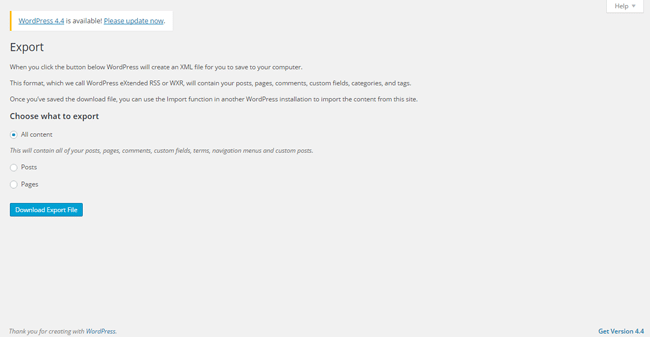
Settings
Here you’ll find all of the basic settings for your WordPress site. Many of your plugin’s settings will also be found here. In general settings you can manage the email associated with your site, date and time format settings, your site’s time zone, settings related to comments a variety of other things.

Referrences
https://codex.wordpress.org/WordPress_Widgets16

